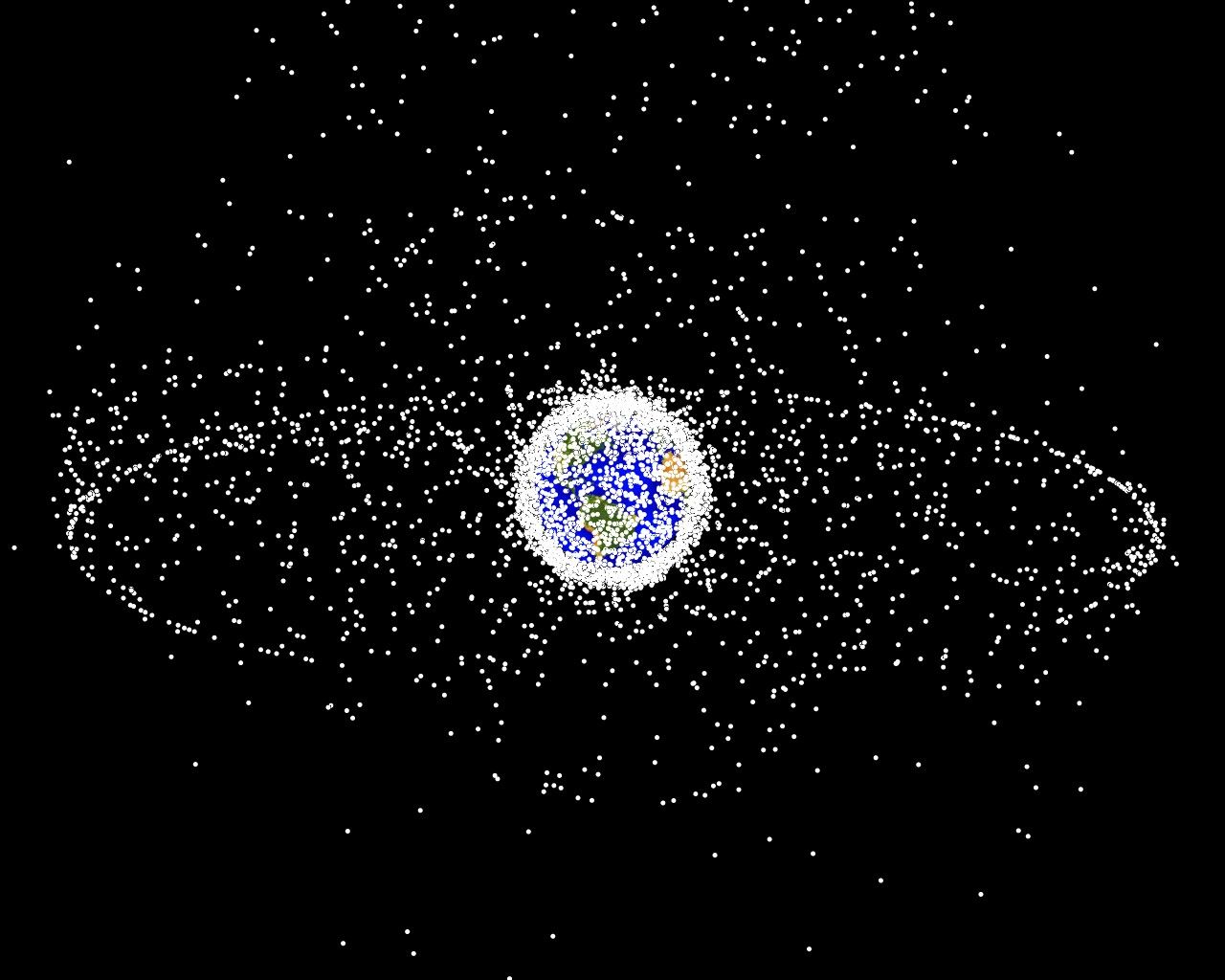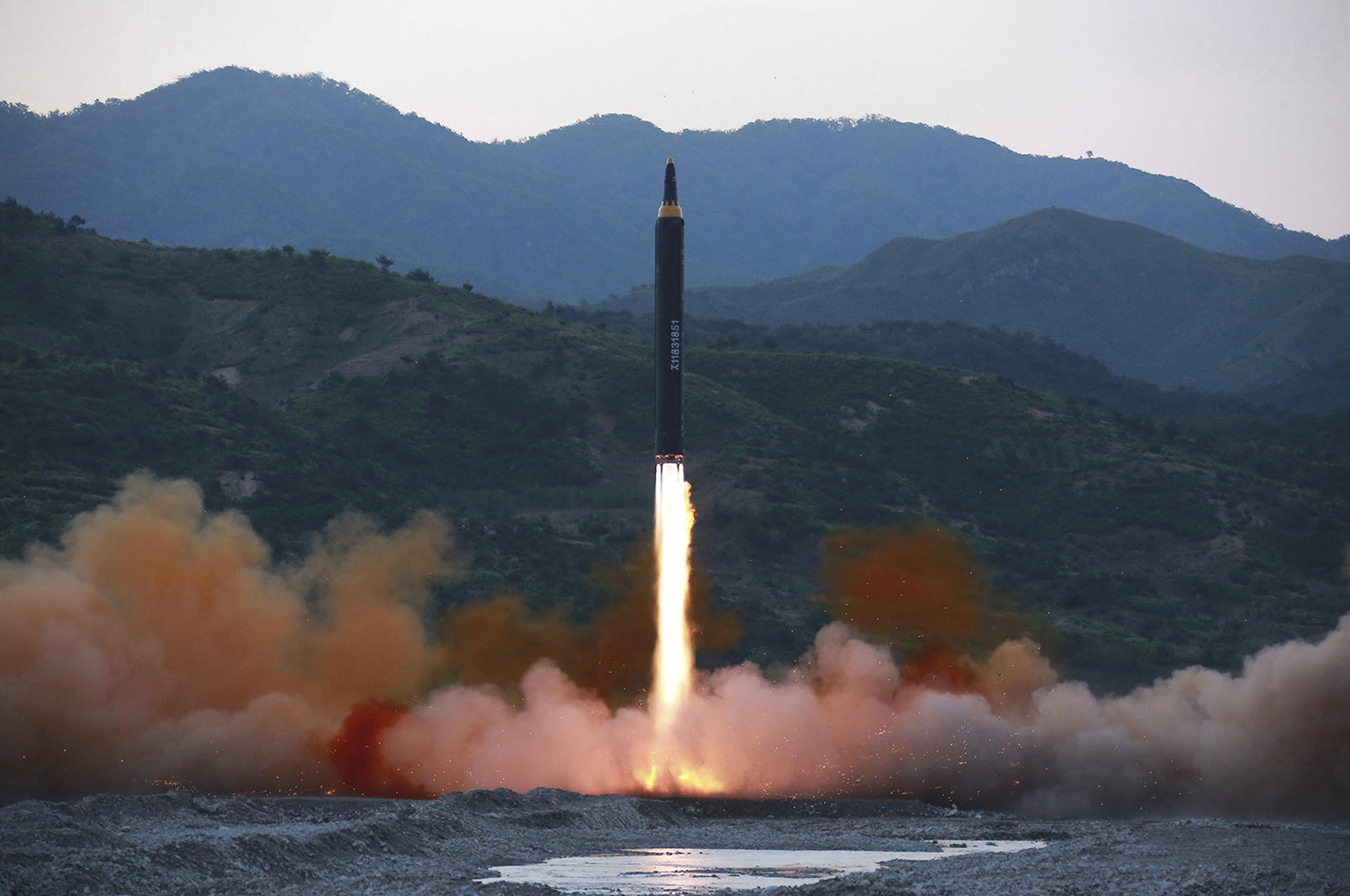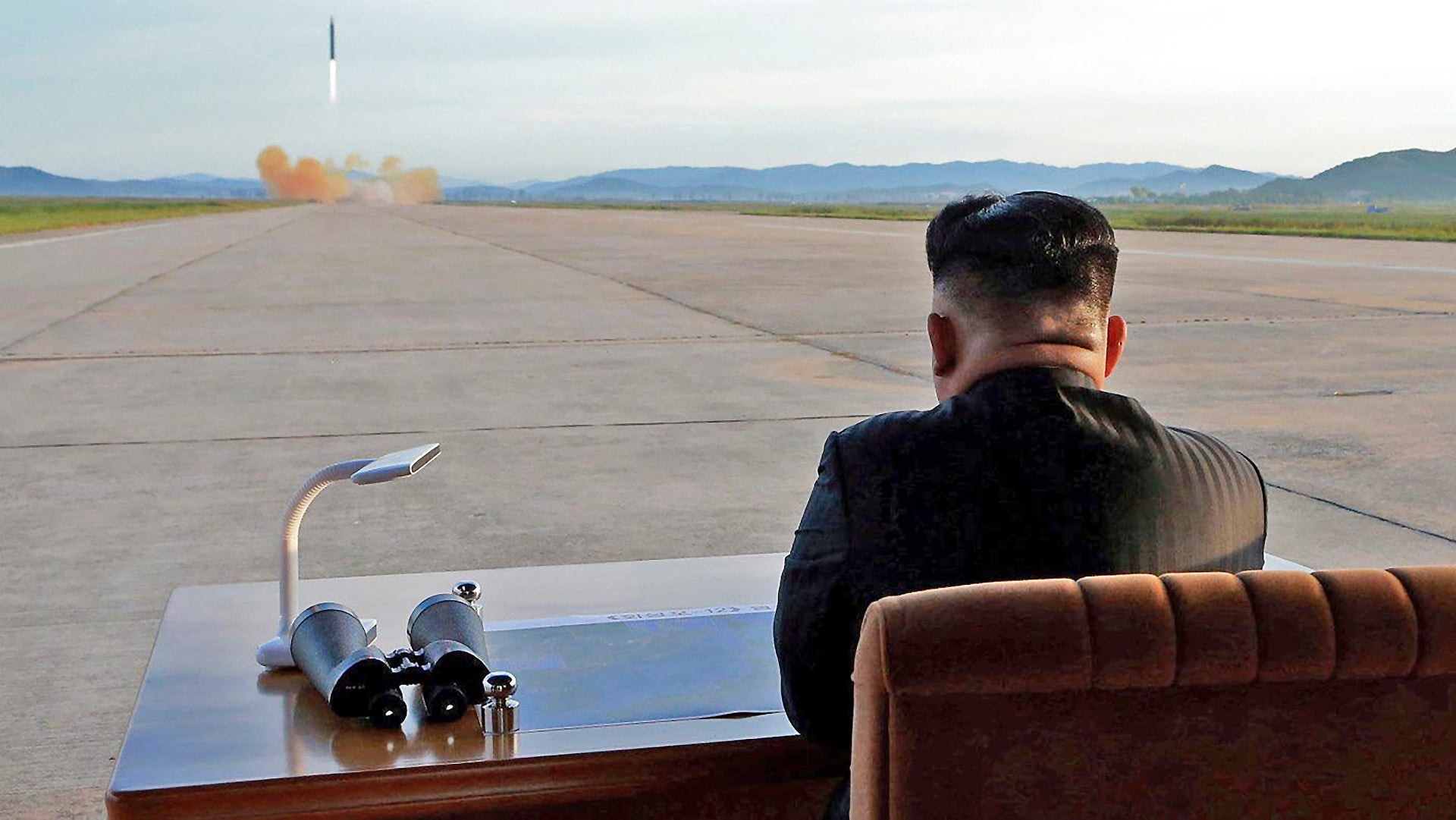Low earth orbit (LEO), which is a band of space measuring from roughly 100 miles to 1,200 miles above the earth, has become one part packed parking lot and one part junkyard within just 60 years of mankind having access to space. Everything from communications satellites to spy satellites to the International Space Station call low earth orbit home. Simply put, the vast majority of all satellites are stationed there and many of them are critical to our very way of life. This makes the reality that North Korea could destroy accessibility to this vital medium without warning very disturbing.
The amount of debris in LEO is already a major problem. Just a tiny piece of space junk traveling at thousands of miles per hour can cause catastrophic damage to operational satellites and even the International Space Station. With over 500,000 trackable pieces of space junk (generally larger than a marble in size) and millions of smaller ones whizzing around the planet, the problem has become a major one, but it could get much, much worse.
Case in point, an anti-satellite weapons test executed by China in 2007 that used a defunct Chinese weather satellite as a target. The satellite was stationed in a polar orbit at 537 miles altitude. A kinetic kill vehicle launched by a modified DF-21 medium-range ballistic missile smashed into the satellite at a combined closure rate of five miles a second. Over 3,500 pieces of trackable space debris were caused by the test—the biggest single release of orbital space debris in history. It is estimated that over 150,000 smaller particles were also released after the kill vehicle shattered the satellite, many of which will remain in orbit for centuries to come.

The test was a major wakeup call on multiple tactical, strategic, and geopolitical levels, and made the growing issue of space junk a much more familiar topic in the public’s consciousness. With America’s military might ever more reliant on space-based capabilities, anti-satellite weaponry has since become a shadowy and fast-moving weapons development space.
Considering major peer state adversaries like Russia and China also rely on space for key military and commerce capabilities, anti-satellite weapons are morphing into much more dynamic and less invasive concepts than the kinetic kill vehicles of the past that pulverize their targets. These new concepts include mini “satlets” capable of manipulating and sabotaging other satellites in orbit— and various countermeasures that work to provide a mission kill on orbiting sensor and communications platforms without smashing them apart up or even touching them at all. These include blinding lasers, electronic jamming, and other forms of temporary operational disruption.
Just because potential high-end foes of the US and the US itself are developing softer, kinder, anti-satellite capabilities, with an unspoken mutually assured destruction strategy of sorts making kinetic kill anti-satellite weapons undesirable, it doesn’t mean other countries that don’t have a large stake in space are following suit. Quite the opposite in fact, they have made note of a potential highly asymmetric weapons capability—one that they most likely already have in their arsenal.

A rogue state, namely North Korea, who has to find ways to neutralize American, South Korean, and Japanese technological superiority any way they can, know full well that they can deny easy access to LEO and destroy many strategic satellites in the process by leveraging their existing ballistic missile technology.
We are not talking about developing a hit-to-kill anti-satellite weapon that rides atop a ballistic missile here. Instead the goal would be to detonate a number of ballistic missiles at varying orbital altitudes and latitudes, with their payload being thousands of ballbearings or other shrapnel items. Instead of being fired on long down-range lofted trajectories, they would be launched at steeper parabolic flight profiles—similar to how North Korea tests its missiles today.
With a handful of missiles launched into popular orbital pathways and detonated could result in much of the current utility that space offers being destroyed. What’s most worrisome is that this application doesn’t require complex reentry vehicles or ground targeting and navigation capabilities like a long-range ballistic missile-bound nuclear warhead does. Instead it turns a ballistic missile into the ultimate anti-access/area denial weapon—that area being the closest vicinity of orbital space.
Even the use of a single missile optimized for this dastardly mission could result in horrific consequences. The Kessler Syndrome, where a single orbital debris event could cause a cascading or “domino” effect, was widely introduced to the public by the 2013 blockbuster “Gravity” starring Sandra Bullock. Because there is so much space junk already in orbit, basically 95% of what’s up there is not used for operational purposes, once a new debris cloud is introduced could snowball as it circles the earth, causing a whole maelstrom of new debris, all with their own unique trajectories. If multiple new debris clouds are introduced, this phenomenon could be exponentially accelerated.

Deploying a satellite under the guise of science is another way one of these events can be triggered. Objects in orbit move at very high speeds, so launching a satellite with the sole purpose of impacting another orbital object, such as an abandoned satellite or even a defunct space station, is another way a massive debris cloud could be intentionally formed.
Just yesterday North Korea announced its interests in deploying another satellite like it did aboard one of its Unha rockets in early 2016 and in 2012. It is widely understood that these satellites have little operational value to the North Koreas. Fears of their payload being used for nefarious purposes have been prevalent, including some postulating they could be some sort of electromagnetic pulse weapon—something that is more possible today than it was years ago considering how far North Korea’s nuclear program has come over just the last year. But using such a cover to execute a space anti-access mission, where North Korea’s satellite impacts object in LEO, is much more feasible.
Still, just firing off ballistic missiles during a time of extreme tension or war would be the most likely way a rogue state like North Korea would attempt to blind and deafen its technologically superior foes. What’s most concerning is that we have no way of intercepting launches of this type, where steep flight profiles make mid-course interceptors useless, and terminal interceptors irrelevant.
Boost phase intercept capabilities are in development, being based almost entirely on directed energy weaponry (lasers) and unmanned aircraft, but it will be at least half a decade before they are operational, and that is a highly optimistic timeline to begin with.

The fact that North Korea has made massive strides in ballistic missile technology over the last year makes all this much more concerning. Their Hwasong-14 (HS-14) ICBM reached a peak altitude of 2,300 miles during its last test in late July. That is nearly ten times the height of the International Space Station’s orbit. With height being sacrificed for payload and flight profile, HS-14 missiles could put massive amounts of debris in orbit throughout the LEO envelope.
The Hwasong-12 (HS-12), which North Korea seems focused on developing as its primary intermediate range ballistic missile to threaten the Pacific region, has proven that it can fly as high as 1300 miles, just beyond the LEO envelope. These missiles are among North Korea’s most proven and menacing weapons, and are likely easier to produce and far more numerous than the larger and longer-range HS-14. Even Pyongyang’s solid fuel KN-15 reached a height of 310 miles during tests, this puts it in the thick of LEO, and that missile can be launched with little warning due to its solid-fuel configuration.

The idea of Kim Jong Un taking away critical space access potentially for generations, and with just a missile or two that he already has in his arsenal is terrifying, but for American and allied military commanders it is an immediate threat to their ability to wage war that has no countermeasure at this time. And there is no doubt that our individual lives would be changed immediately by such an act as we rely so heavily on satellites in LEO for everything from communications to weather forecasting.
The chances of North Korea carrying out such a devastating asymmetric attack would become increasingly more likely as a conflict approaches or gets underway and it should be factored into the cost-benefit analysis of everyone in a strategic decision making position from the Commander in Chief on down the line. Beyond the military reasoning for launching such an attack, by most indications the Kim regime would follow a “scorched earth” mentality if an attempt is made at removing it from power, and taking low earth orbit away from humanity could be part of such a plan.
If anything else the reality that a single man with some rockets could potentially destroy, or at least greatly harm, such a critical resource for all of mankind should serve as yet another reminder of why we need to invest in a solution to the space junk problem as a whole. Some potential solutions, or at least partial ones, are beginning to emerge. These include using small “cubesats” with thrusters to de-orbit large pieces of space junk—which is likely similar to the latest anti-satellite military technology rumored to be in development—to building de-orbiting systems into satellites before they are launched. Even orbital tethers are being eyed for the seemingly insurmountable task of cleaning up LEO.

But even in the decades to come, should a large scale orbital cleanup be executed using any number of concepts, a handful of missile aimed at intentionally cluttering LEO can potentially create the problem over again, at least to some degree. As such, being able to shoot down all types of ballistic missiles during their ascent stage, before they can climb to orbital heights, remains the best antidote for such a threat—that and trying to stop the proliferation of medium-range and more complex ballistic missiles in the first place.
Contact the author: Tyler@thedrive.com
